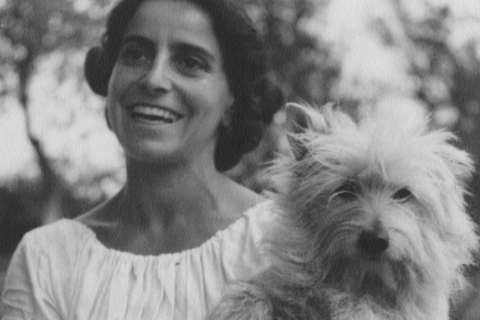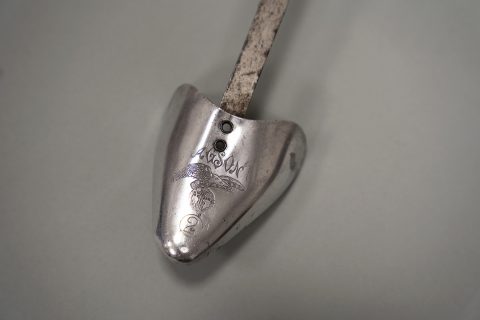Icons painted on ammunition boxes is a unique art exhibition, which will be on display at Kaunas Ninth Fort Museum from February 29. The authors of the exhibition are artists from Kyiv: Sonia Atlantova, a painter and book illustrator, and Oleksandr Klimenko, a painter and writer.
The duo has been working on their unusual art since 2014, after the Russian aggression against Ukraine started. They call the soldiers who collect the ammunition boxes left in the fields as co-authors of the works.
The exhibition, which travels around the world and offers hope, has already been presented in more than 120 different locations, and it will be exhibited in Kaunas for the first time.
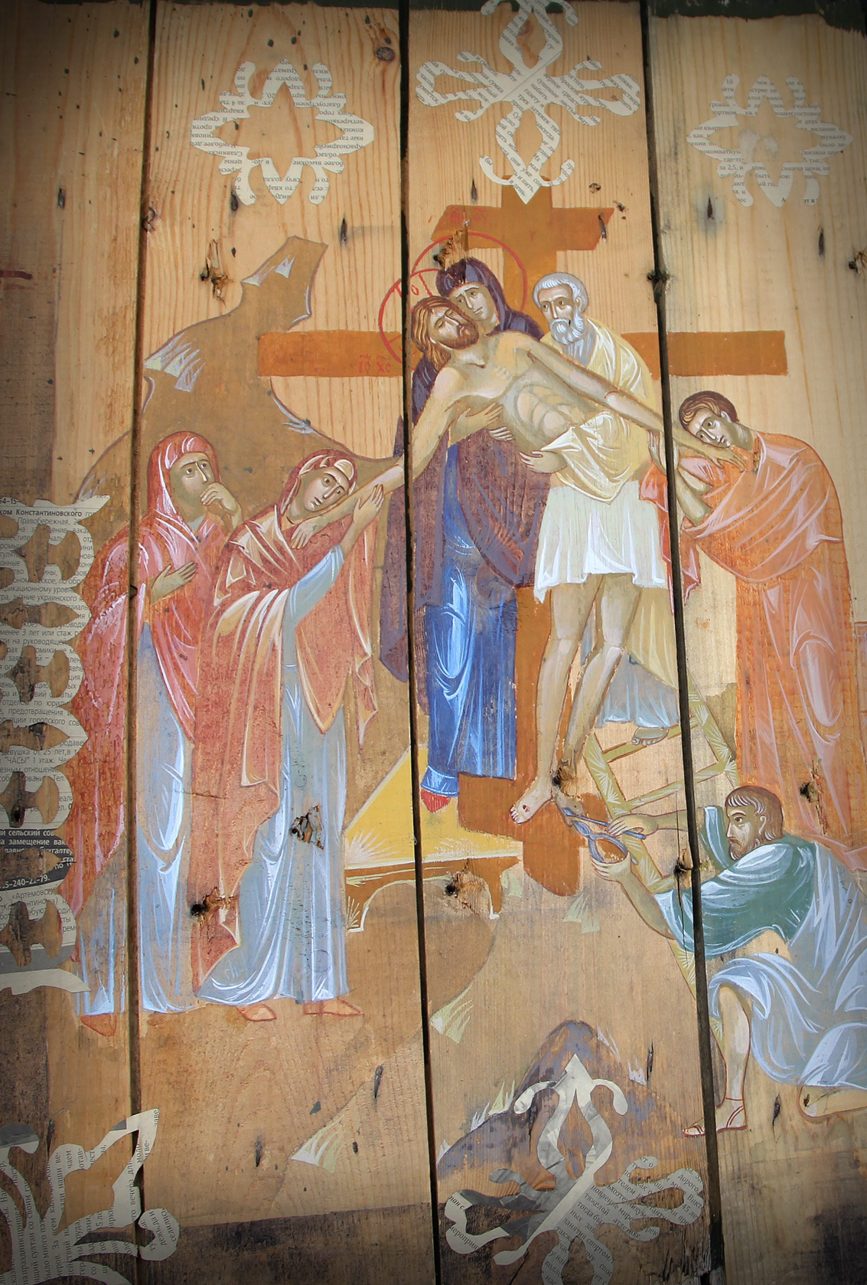
Decision that surprised the world
The idea that wooden parts of boxes used for storing and transporting ammunition could be used for art came to O. Klimenko.
On the battlefield, he realised that what remains after the ammunition is used up is simply burned. After examining the lids and bottoms, the artist was convinced that they are very similar to the shields on which traditional Ukrainian icons are painted. The main idea behind the artwork was the desire to turn the useless tools of war and death into a symbol of life.
Some of the first boxes on which the artists painted the icons came from Mariupol. They were collected on the battlefield and handed over to the authors of the idea by Ukrainian marines.
O. Klimenko painted some of the icons in his spare time while volunteering in the Pirogov hospital and on the battlefield.
The first exhibition of the icons was held in Kyiv in 2015. That year, it was also presented for the first time at the Lithuanian Embassy in Ukraine and later at the European Parliament.
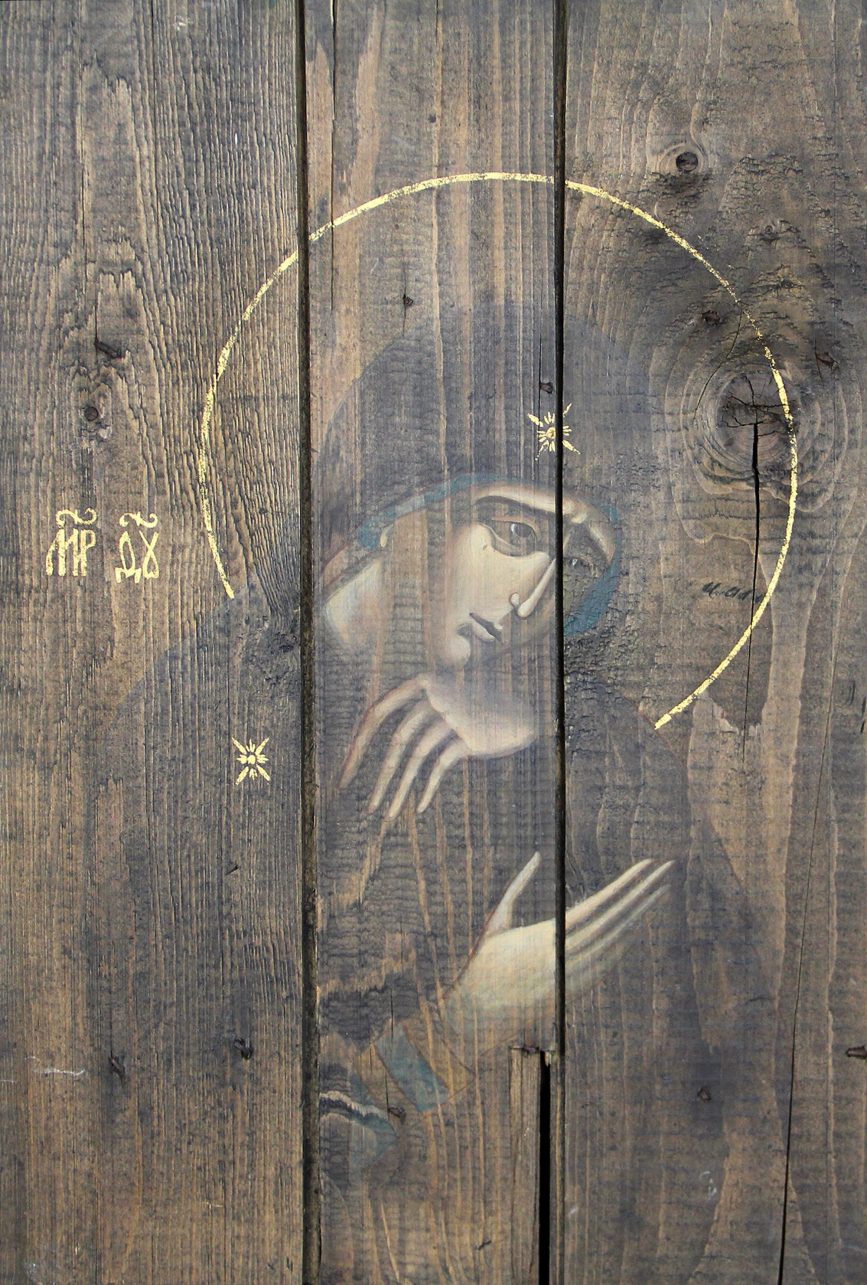
“We received information about this exhibition from Warsaw. We were immediately interested in it and started looking for partners (museums) in Lithuania who would agree to cooperate and exhibit it. At the same time, we contacted one of the authors, Oleksandr Klimenko, and he immediately accepted our offer,” tells Dorota Mamaj, the Director of the Polish Institute in Vilnius, about how the icons on ammunition boxes came to Lithuania.
“We were impressed by the idea of the exhibition and its implementation, as well as the positive message of the project,” says Mamaj, “The war in Ukraine has already been continuing for two years. For two years, Ukrainian soldiers have been bravely repelling attacks from the Russian aggressor. However, it is not only soldiers who are fighting. It is the whole nation and the authors of this exhibition as well who are fighting for free Ukraine. Their fight may not be as impressive, but it is no less important. The icons, created on certain instruments of death, ammunition boxes, have become the symbols of the victory of life over death. This is the most important – and optimistic – message of the exhibition: good always wins. This is what we wish the authors of the exhibition and the entire Ukrainian nation – victory and freedom.”
Thoughtful decisions
The exhibition will be on show in Kaunas from February 29 to August 25, 2024.
Vytautas Petrikėnas, the Head of the History Department of Kaunas Ninth Fort Museum, says that the date chosen is not accidental, but has a symbolic meaning: this year, February 24 marks two years since Russia’s open military invasion of Ukraine, and the other date is the 33rd anniversary of the proclamation of Ukraine’s independence (August 24, 1991).
According to him, in order to ensure the continuity of support to Ukraine, the museum is planning another surprise for visitors this August.
The space chosen for the exhibition is unique and has a strong symbolic load. V. Petrikėnas tells us that during the occupation of the Russian Empire, the Ninth Fort was a military object, a part of Kaunas Fortress. The purpose of the western frontier fortress was not only to protect the empire from invasion by other countries, but also to ensure the manifestation of organised internal civil resistance in the captured territory.
“The part of the museum’s exposition about the armaments of Kaunas fortress will fall into the shadows and temporarily provide the space to the exhibition about the struggle against the Russian Empire, which is desperately trying to revive these days. This is probably the best place in Kaunas, and perhaps in Lithuania, to reveal the continuity of the empire of violence and the tendency of history to repeat itself if we do not learn its painful lessons,” the interlocutor notes.
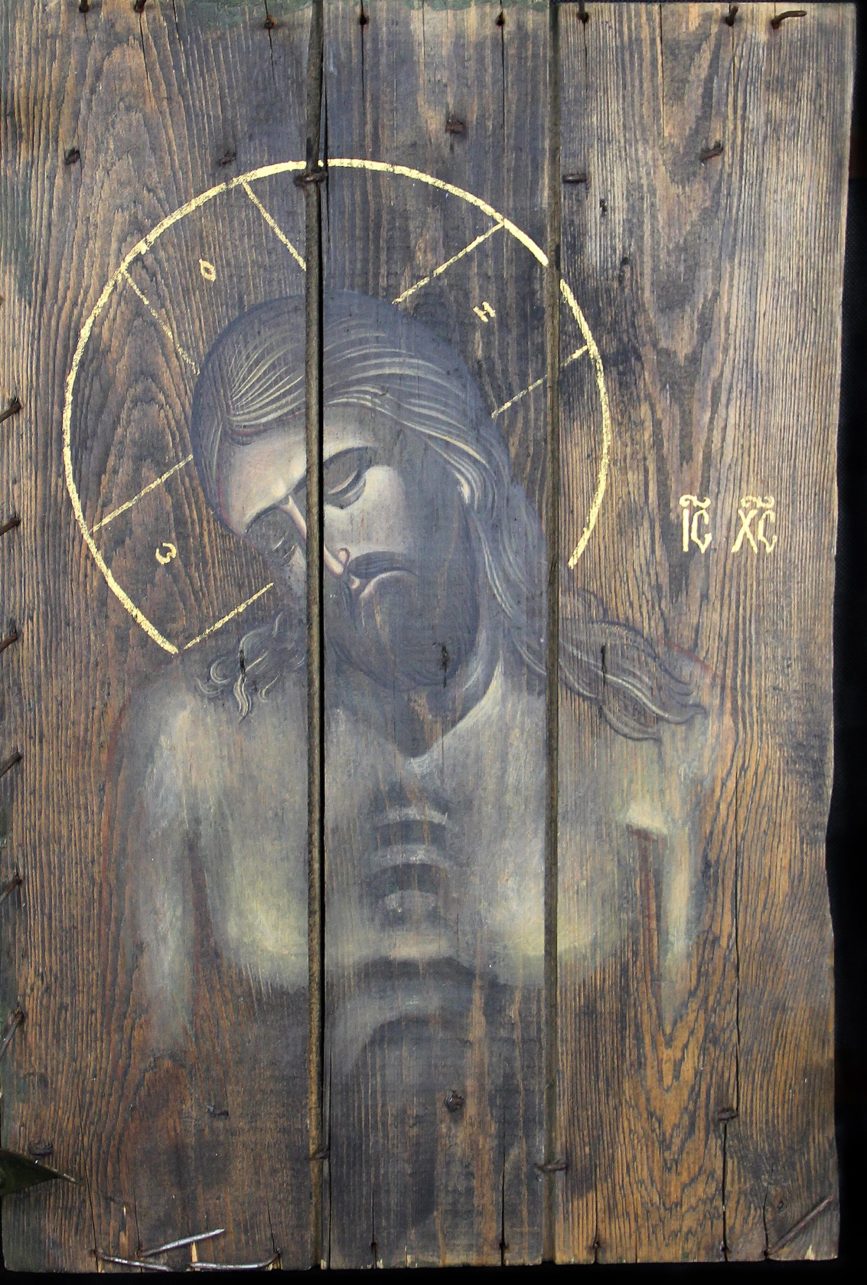
In his opinion, the exhibition is meaningful because of its mission to inform the public, especially foreigners, about the real war that is taking place nearby.
“With real destruction, with real violence, with real victims and with real genocide. Nevertheless, at the same time, this exhibition is about faith that brings hope. Focus and hope are the strength of the state, which cannot be overcome by blind cruelty,” explains the Head of the History Department of Kaunas Ninth Fort Museum.
Unseen moments
We can perceive several reasons why Kaunas Ninth Fort Museum has decided to exhibit “Icons on Ammo Boxes” in its premises.
“First of all, the museum is trying to support Ukraine in its war against the aggressor, Russia, by all means. During the commemoration January 13, 2023, we organised a workshop for casting “trench candles”, we are publicising the valuables preserved in the Museum’s collections that tell the story of Lithuanians and Ukrainians’ unity in Soviet concentration camps and exile, and we are encouraging people to contribute to various fundraising initiatives. We draw attention to the fact that the actualization of the importance of Ukraine’s victory for Europe’s common geopolitical security can also take place in society through the sensitive language of art”, – claims V. Petrikėnas.
In his opinion, Oleksandr Klimenko’s and Sofia Atlantova’s paintings of icons on fragments of ammunition boxes from the battlefield give the visitor the opportunity to experience dual feelings: to admire a professional painting and at the same time to be disturbed by the brutal history of the object on which it is painted.
“The juxtaposition of beauty and ugliness at the same time is one of the highlights of the exhibition,” he notes.
The exhibition at Kaunas Ninth Fort Museum will be displayed with an audiovisual installation created especially for this space by photographer and filmmaker Sergej Orlov. Unpublished documentary footage of Klimenko’s behind-the-scenes creative process, of destroyed urbanised areas in Ukraine, of the process of painting the icons accompanied by the priest’s chanting, all of which he has captured himself, adds a unique dimension to the overall project.

